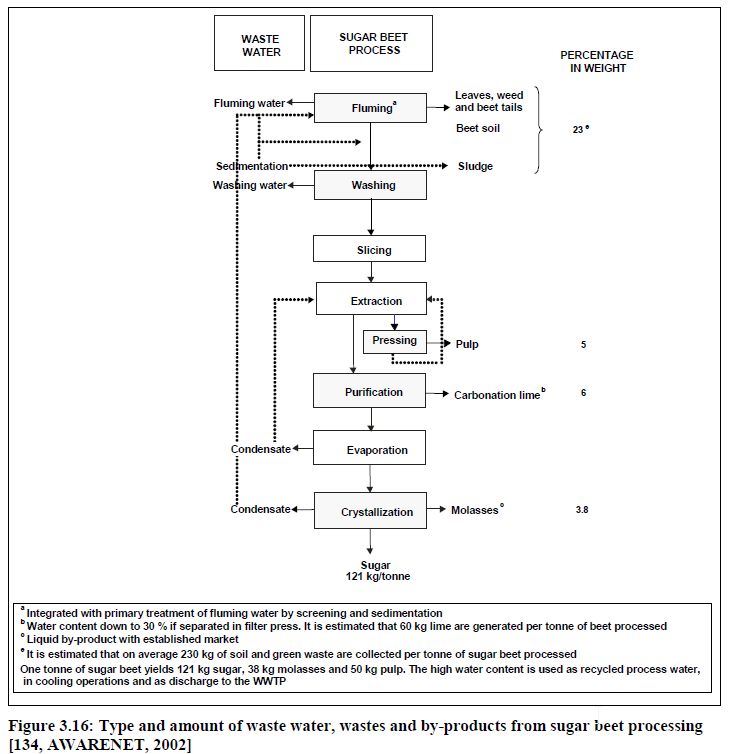Difference between revisions of "Molasses"
From Efficiency Finder
(Created page with "Back to EFFICENCY FINDER OF FOOD INDUSTRY <br> Back to Biobased products in sugar") |
|||
| (One intermediate revision by the same user not shown) | |||
| Line 2: | Line 2: | ||
<br> | <br> | ||
Back to [[Biobased products in sugar]] | Back to [[Biobased products in sugar]] | ||
| + | === Description === | ||
| + | Sugar beets contain some soluble non-sugar substances, 30 - 40 % of which are eliminated during purification of the juice with Ca2+ precipitable anions, pectins and proteins. The remainder is left in the juice and prevents the complete crystallisation of the sugar, leaving a final syrup, called molasses. This is the major single loss of sugar in the process. 10 - 18 % of the sugar content of the beet is in molasses. About 38 kg molasses per tonne of sugar beet is generated. Molasses is about 80 % solid material and 20 % water. (EC, 2006) | ||
| + | |||
| + | |||
| + | [[File:WasteWater.jpg]] | ||
| + | |||
| + | |||
| + | === Valorisation techniques === | ||
| + | * Animal feed | ||
| + | * Production of ethanol and bio-ethanol | ||
| + | * co-substrate for biogas production | ||
| + | |||
| + | === References === | ||
| + | * European Commission. 2006. Reference Document on Best Available Techniques in the Food, Drink and Milk industries | ||
| + | |||
| + | |||
| + | <br> | ||
| + | Back to [[Biobased products in sugar]] | ||
| + | <br> | ||
| + | Back to [[Subsection DA food|EFFICENCY FINDER OF FOOD INDUSTRY]] | ||
Latest revision as of 11:23, 19 November 2014
Back to EFFICENCY FINDER OF FOOD INDUSTRY
Back to Biobased products in sugar
Description
Sugar beets contain some soluble non-sugar substances, 30 - 40 % of which are eliminated during purification of the juice with Ca2+ precipitable anions, pectins and proteins. The remainder is left in the juice and prevents the complete crystallisation of the sugar, leaving a final syrup, called molasses. This is the major single loss of sugar in the process. 10 - 18 % of the sugar content of the beet is in molasses. About 38 kg molasses per tonne of sugar beet is generated. Molasses is about 80 % solid material and 20 % water. (EC, 2006)
Valorisation techniques
- Animal feed
- Production of ethanol and bio-ethanol
- co-substrate for biogas production
References
- European Commission. 2006. Reference Document on Best Available Techniques in the Food, Drink and Milk industries
Back to Biobased products in sugar
Back to EFFICENCY FINDER OF FOOD INDUSTRY
